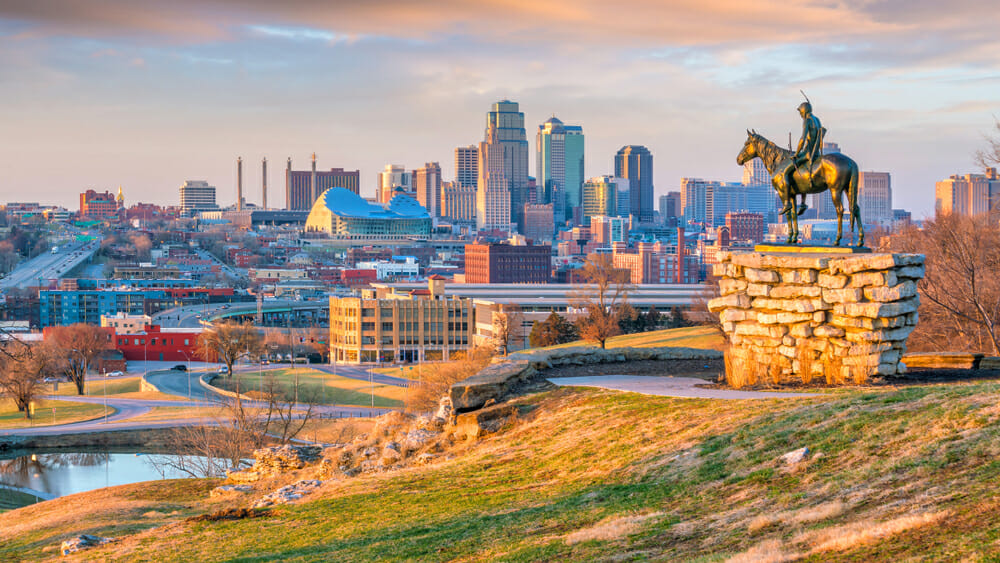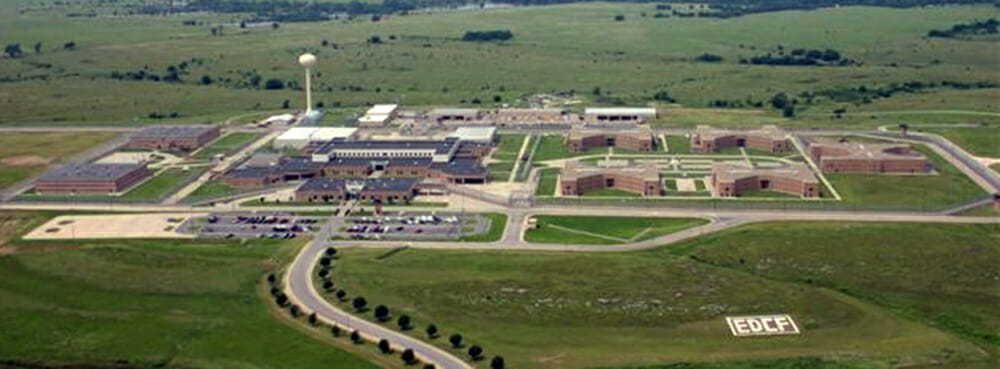
Criminal Rehabilitation and Justice in Kansas
Each state provides its own unique approach to criminal justice. In Kansas, with its relatively low population and rural nature, the state has a highly state-centralized approach to criminal justice that reduces federal involvement and private prison intervention. The following sections seek to provide basic information regarding Kansas’s criminal justice system, the Kansas prison population, and criminal reform in Kansas.
Kansas Prison Population Statistics
Two questions come to mind when considering Kansas’s prison population. How many people are incarcerated in Kansas? What are the biggest prisons in Kansas? According to the Bureau of Justice Statistics, Kansas has the 28th highest incarceration rate in the U.S., ahead of Colorado but behind Oregon. The state incarcerates 298 for every 100,000 people living there. Kansas’s incarceration rate is lower than the national incarceration rate of 358 per 100,000.1
According to the National Institute of Corrections, Kansas has 97 jails in 105 counties.2 The state’s jail population in 2019 was 8,090. The state also operates eight prisons that house 9,965 inmates. Kansas-operated prison and jail facilities have a staff of 3,562 employees and a budget of $496,377,508. Based on reporting from the Urban Policy Institute, Kansas’s Department of Corrections is the seventh costliest item in the state’s budget.3
Kansas has experienced a steady increase in its incarcerated population. While the state’s jail population leveled off and decreased slightly between 2008 and 2014, the prison population continued to increase. Kansas also has residents in the state’s community corrections system (parole and probation). As of 2019, the state had a community corrections population of 18,096 under probation and 5,540 under parole.

The El Dorado Correctional Facility is the largest prison in Kansas, able to house 1,511 inmates. There is one federal prison in Kansas, and one federal prison camp, which has a combined inmate population of 1,576. There are no private prisons in Kansas.5
Crime Rates in Kansas
Crime rates in any given state serve as a valuable data point for understanding the state’s response to that crime. Kansas reports a violent crime rate of 411 per 100,000 people and a property crime rate of 2,315 per 100,000.
But what crimes contribute to the crime rate in Kansas? The Bureau of Justice Assistance provides insight into what types of crimes are being committed in Kansas, and according to their data, the state records about 10,000 violent crimes per year. Those violent crimes include about 110 murders/manslaughters, 2,000 rapes, 1,500 robberies, and 7,000 aggravated assaults. The state also experiences about 85,000 property crimes per year, including 17,000 burglaries, 61,000 incidences of larceny, and 6,600 motor vehicle thefts. Each year, Kansas law enforcement officers perform about 78,000 arrests.5

State-level data paints a slightly different picture of Kansas’s crime rate, suggesting the state has more violent crime than federal data show, but less property crime. According to the Kansas Bureau of Investigation, the state records 13,000 violent crimes and 73,000 property crimes yearly.6
One of the most important metrics for analyzing a state’s criminal justice system is the recidivism rate. With that in mind, what is the recidivism rate in Kansas? Statistical data on recidivism is collected at the state and national levels. Federal data suggests Kansas has a recidivism rate of 34.8%, meaning the Kansas criminal justice system is not working for about one-third of the individuals who go through it.
The State of Kansas released a detailed report outlining its recidivism rate and what actions seemed to reduce recidivism. According to that report, when formerly incarcerated individuals secure employment that pays a living wage, their recidivism drops to 13%, less than half the state’s average. That outlines the need for offender reentry programs.7
Criminal Rehabilitation in Kansas
Criminal reform in Kansas is the goal of the state’s criminal justice system. Criminal justice in Kansas does not work unless inmates experience actual reform and go on to live crime-free lives post-incarceration. Not every prison and jail in Kansas implements the same programs, but some of the more common programs include:8
- Life skills enhancement
- Sex offender treatment programs
- Therapeutic community programs
- Health and fitness activities and programs
- Religious and spiritual programs (also called Chaplaincy Departments)
- Work placement programs where inmates can earn money for their labor
Kansas has also invested in programs that help formerly incarcerated persons reintegrate into society. These may be partly responsible for the recent, slight dip in the state’s recidivism rate. Some such programs include:9

- Re-Entry Vision. This program empowers offenders with the tools they’ll need to rejoin their communities as productive and contributing members of society.
- Re-Entry Mission. This program uses evidence-based practices to assist offenders in integrating back into society without re-offending.
- Building Better Opportunities For People with Criminal Records. Operated by the Getting Talent Back to Work Initiative, this program is leading the way in reducing barriers and building bridges for Kansas residents with criminal records. The program assists formerly incarcerated persons in finding gainful employment by connecting them with employers that are involved in the program.
Alternatives to Incarceration in Kansas
Alternatives to prison in Kansas are also quite important. There are currently some programs of this kind, but the state must expand them. Some of the Kansas alternatives to jail include:
- Drug court
- Mental health court
- Family treatment programs
- Domestic violence programs
- Treatment programs for veterans
- Juvenile delinquency courts and programs
- Programs for offenders with DUIs and DWIs
Policymakers should consider implementing more educational programs inside prisons in Kansas. Further, policymakers should improve and update existing rehabilitation programs inside prisons in Kansas. Programs like these are crucial in ensuring inmates experience real rehabilitation and reform. Educating inmates and empowering them with life skills, coping strategies, and problem-solving strategies that enable them to live without resorting to crime will be essential for improving the criminal justice system in Kansas.
Sources Cited:
- BJS. “Prisoners in 2020 – Statistical Tables.” Bureau of Justice Statistics, 2020. bjs.ojp.gov
- NIC. “Kansas 2019.” National Institute of Corrections, 2019. nicic.gov
- Urban. “Project Kansas.” Urban Institute, 2022. urban.org
- KDC. “El Dorado Correctional Facility.” Kansas Department of Corrections, 2022. doc.ks.gov
- BJA. “Kansas.” Bureau of Justice Assistance, 2014. bjafactsheets.iir.com
- KBI. “Kansas Crime Index 2020.” Kansas Bureau of Investigation, 2021. kansas.gov
- CSGJC. “Justice Reinvestment in Kansas.” CSG Justice Center, 2020. csgjusticecenter.org
- KDC. “Programs.” Kansas Department of Corrections, 2014. doc.ks.gov
- KDC. “Programs and Risk Reduction.” Kansas Department of Corrections, 2021. doc.ks.gov
Related Articles
Study Skills for a New Life
Learning Skills for Life Success “Well, this lesson of Criminon helped me to learn some new techniques I could use when studying. The Barriers to...
Read more >>


